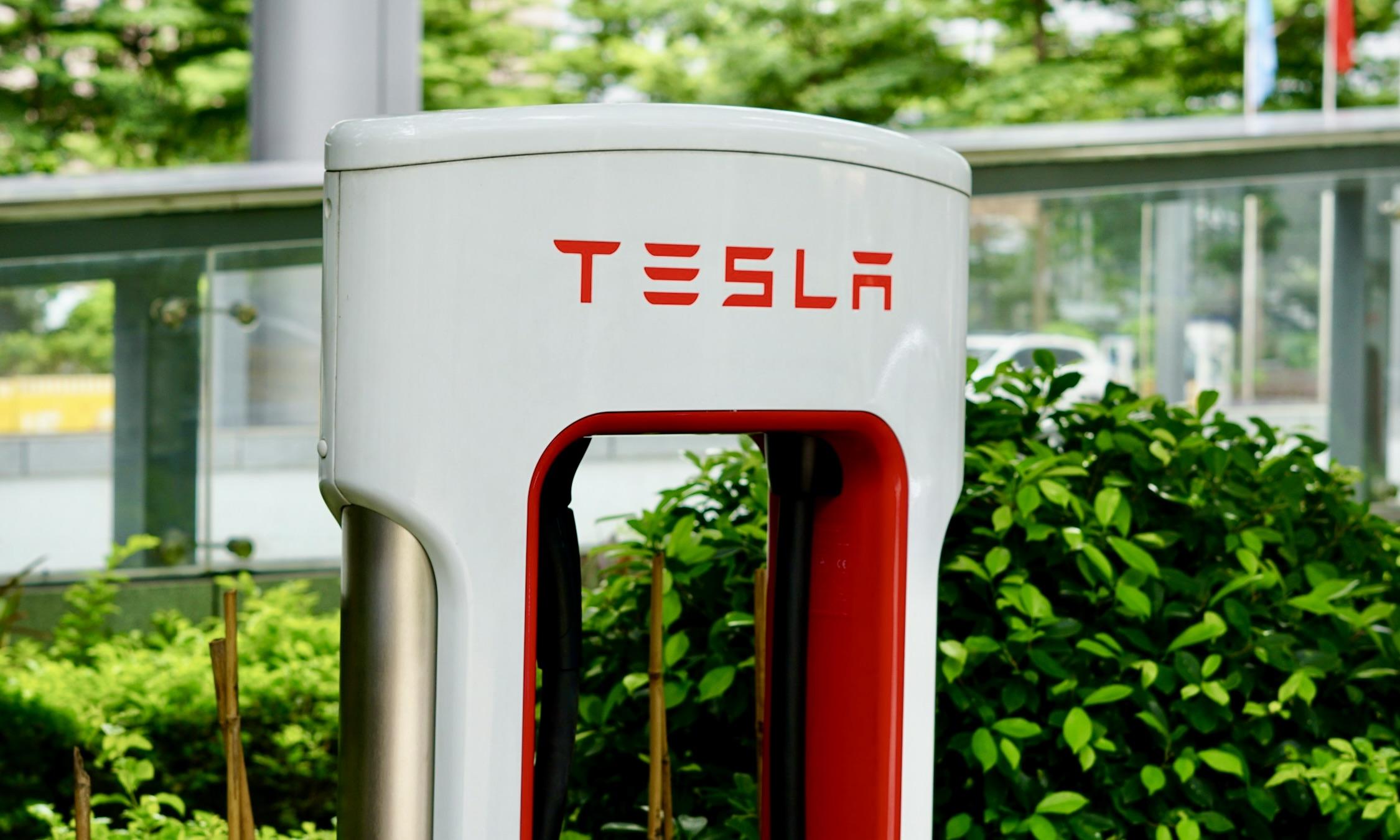A Kia EV6 and Hyundai Ioniq 5 were recently observed charging at a Tesla Supercharger, suggesting native NACS support could be on the horizon.
Hyundai and Kia Seen Charging at Tesla Supercharger
Using a native NACS port to charge, a Hyundai Ioniq 5 and a Kia EV6 were observed at a supercharger. This could mean that native NACS support is on the way.
Sam Abuelsamid, a freelance car journalist, saw the encounter yesterday at a Supercharger that had a Magic Dock. Given that Abuelsamid resides in Ypsilanti, Michigan, where a Magic Dock charger is available, it is reasonable to assume that this charger is the same one.
On Threads, Abuelsamid made a post about it:
Even though they're covered with cladding, the Hyundai and Kia cars are easy to see. However, the Hyundai is connected straight to the standard Supercharger port, as opposed to Abuelsamid's Mach-E, which was using the Magic Dock.
First Non-Tesla Vehicles Charging with Native NACS Connection
What makes this fascinating is that it might be the first non-Tesla vehicle we've seen publicly charging using a native NACS connection instead of an adapter.
Per Electrek, currently, Tesla's NACS website lists Ford and Rivian as two manufacturers that are "supported" for Supercharging using adapters. General Motors, Volvo, Polestar, and Mercedes will soon have assistance, it adds. Neither Hyundai nor Kia are mentioned on Tesla's website, and neither a charger nor word of its imminent arrival has reached us.
Although they were a little slow to jump on the NACS announcement bandwagon, the two companies have been crushing it in the electric vehicle sales department.
Hyundai and Kia Set to Lead NACS Deployment
With the discovery of their NACS charging capabilities, Hyundai and Kia are now in a position to potentially lead the pack when it comes to the development of their NACS deployment.
The majority of car companies have stated their intention to distribute adapters initially, with the adoption of a native port following. The announcement from Hyundai and Kia, however, said that native ports will be available at the tail end of 2024 and that current customers will begin to receive adapters in the first quarter of 2025.



 Meta’s $1M Inaugural Donation to Trump Sparks Outrage: ‘Mark Zuckerberg’s Politics Are as Two-Faced as Meta!’
Meta’s $1M Inaugural Donation to Trump Sparks Outrage: ‘Mark Zuckerberg’s Politics Are as Two-Faced as Meta!’  Xiaomi YU7 Delayed Until 2025 in China: What’s Holding Back This Electric Crossover?
Xiaomi YU7 Delayed Until 2025 in China: What’s Holding Back This Electric Crossover?  Chanel’s Shocking Choice: Matthieu Blazy Takes the Helm in a Move That ‘Redefines Luxury Forever!’
Chanel’s Shocking Choice: Matthieu Blazy Takes the Helm in a Move That ‘Redefines Luxury Forever!’  AMD’s Lisa Su Shuts Down Intel Merger Rumors, Declares AI’s Future Bright in TIME Exclusive
AMD’s Lisa Su Shuts Down Intel Merger Rumors, Declares AI’s Future Bright in TIME Exclusive  Tesla Head Autopilot HW Jumps to Amazon’s Zoox, Shaking up Self-Driving Ambitions
Tesla Head Autopilot HW Jumps to Amazon’s Zoox, Shaking up Self-Driving Ambitions  Burger King ‘We Don’t Snitch’ Post EXPOSED as Fake! Outrage Over Mangione Arrest Tweet Turns to Shock
Burger King ‘We Don’t Snitch’ Post EXPOSED as Fake! Outrage Over Mangione Arrest Tweet Turns to Shock  iOS 18.2, macOS Sequoia 15.2 Supercharge Apple Intelligence With ChatGPT, Genmoji, and Image Playground
iOS 18.2, macOS Sequoia 15.2 Supercharge Apple Intelligence With ChatGPT, Genmoji, and Image Playground  Egg Prices Soar 54%, Leaving Experts Stunned: 'Inflation May Surge Under Trump Policies!'
Egg Prices Soar 54%, Leaving Experts Stunned: 'Inflation May Surge Under Trump Policies!'  xAI's Grok Model Goes Free, Redefining AI Accessibility for All X Users
xAI's Grok Model Goes Free, Redefining AI Accessibility for All X Users  Apple Intelligence Surges as Servers Eye 2026 AI Chip Breakthrough With Broadcom Support
Apple Intelligence Surges as Servers Eye 2026 AI Chip Breakthrough With Broadcom Support  OpenAI CFO: Trump Driving a World-Shaping AI Era, Musk Fuels Intensifying Tech Rivalry
OpenAI CFO: Trump Driving a World-Shaping AI Era, Musk Fuels Intensifying Tech Rivalry  Tesla Cybertruck’s Mysterious BYD Visit: Reverse-Engineering Buzz Shakes Up EV Battlefield
Tesla Cybertruck’s Mysterious BYD Visit: Reverse-Engineering Buzz Shakes Up EV Battlefield  Google Bets Big on AI to Redefine Search and Revolutionize Healthcare With Bold $50B Investment
Google Bets Big on AI to Redefine Search and Revolutionize Healthcare With Bold $50B Investment  OpenAI, Microsoft AI Cloud Pact Under Fire: Google Presses FTC to Unravel Exclusive Grip on Future Tech
OpenAI, Microsoft AI Cloud Pact Under Fire: Google Presses FTC to Unravel Exclusive Grip on Future Tech  Tesla’s Cybertruck China Filing Fuels Buzz Over Long-Awaited Market Launch
Tesla’s Cybertruck China Filing Fuels Buzz Over Long-Awaited Market Launch 































